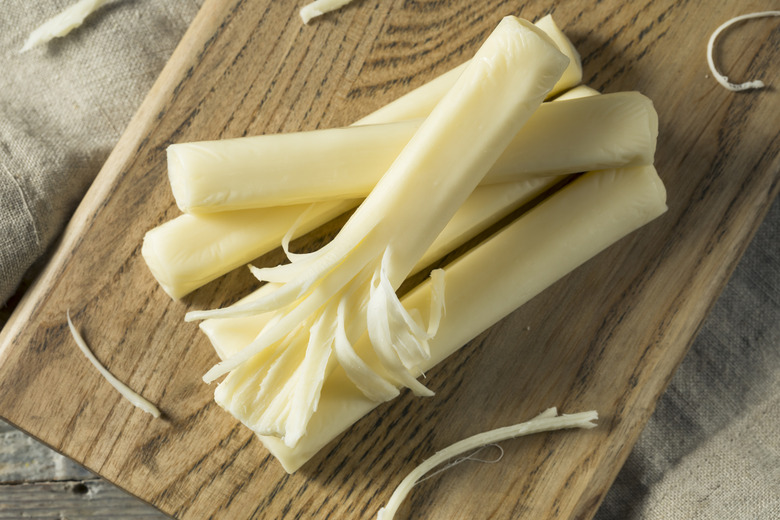The Weird Way String Cheese Gets Stringy
String cheese is one of those foods that's as much of an experience as it is a snack. Do you bite it? Do you peel it? Choose your own adventure, it's a blast either way! But just how does string cheese get so stringy?
America's Best Macaroni and Cheese
Think about it. No other cheese peels like that. Can you imagine peeling a string off a block of sharp cheddar? Do they add something to it, infuse certain chemicals, or do something else to this processed snack? Nope; it turns out that string cheese is made using totally natural processes. String cheese needs only one ingredient: mozzarella.
String cheese today is made simply by heating fresh mozzarella to 140 degrees Fahrenheit, a temperature just hot enough to realign the milk proteins naturally found in cheese. When the cheese is heated and stretched, the proteins line up, creating that signature string-like texture.
But it wasn't always made this way. String cheese was (fittingly) introduced to America via Wisconsin, the cheese capital of the United States. Baker Cheese, a company that sold huge cheese slices to pizza restaurants, made mozzarella so good they were receiving inquiries expressing a large demand for snackable portions. But Baker Cheese decided they couldn't just sell whole balls of mozzarella cheese as a portable snack. (Though if you like to eat them that way, they probably wouldn't judge.)
The company discovered that if you take strips of mozzarella, roll them, cut them into ropes, and soak the ropes in salt brine, you get perfectly sized ropes of string cheese. They tested out the snack by bringing cheese to the local bar and (not surprisingly) found it was a huge hit!
Again, no chemicals required.
Next time you open up a snack pack of string cheese, take solace in the fact that there aren't any chemicals or carcinogens involved in its production. That stick of mozzarella is quite the healthy snack! There you have it — yet another item to add to the list of very valid reasons to eat more cheese every day.
